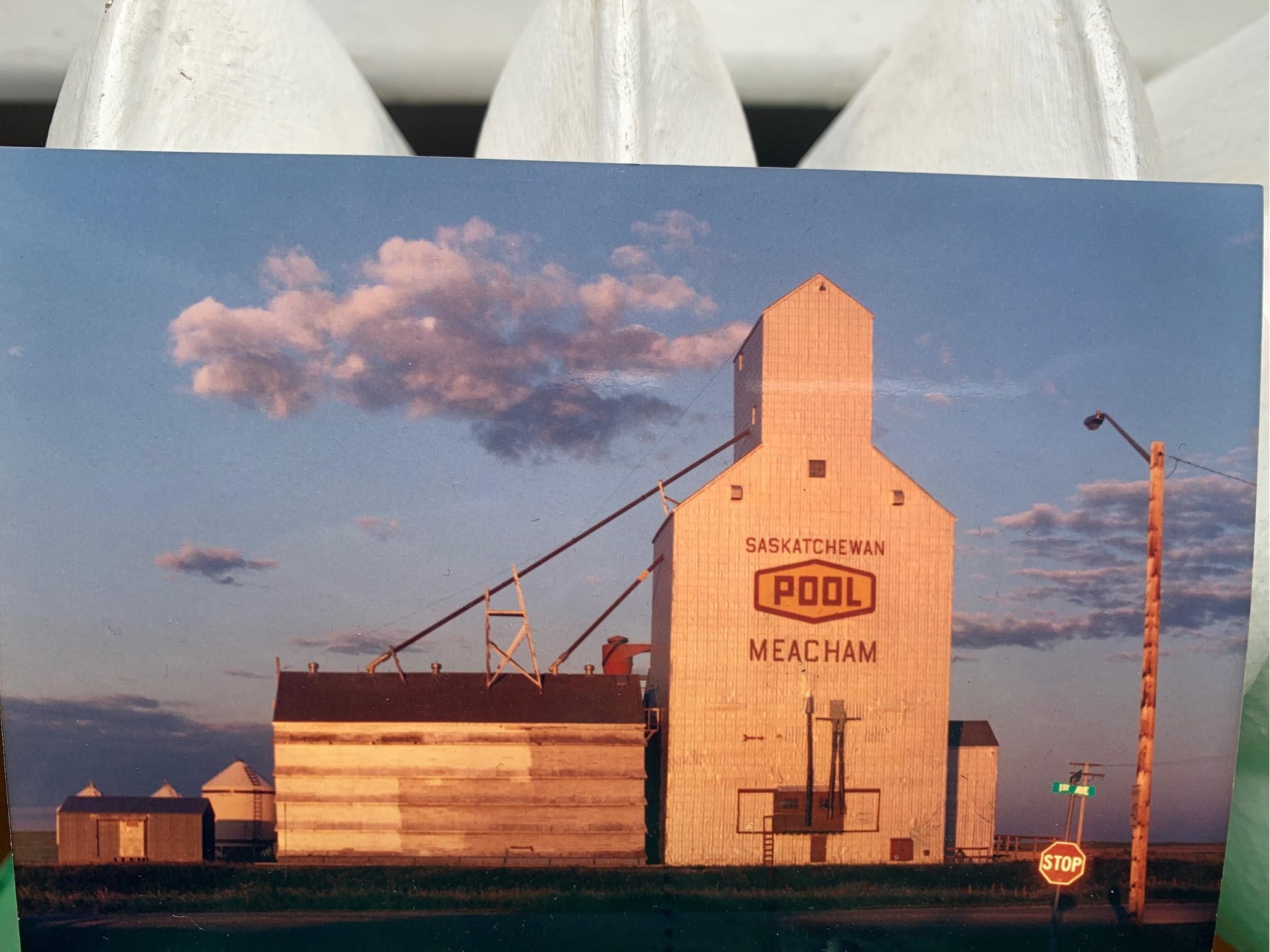More should’ve been done to protect its legacy, one resident says
By Diego Flammini
Staff Writer
Farms.com
A rural Saskatchewan community has lost a part of its history.
The last Saskatchewan Wheat Pool grain elevator in Meacham, Sask. came down on June 8. At one point in its history the village had five.
Community members are saddened by the grain elevator’s destruction.
“This should be part of the community’s heritage,” Cindy Hanson told Farms.com. “Communities need to think about why things like this matter.”

An old photo of the Meacham elevator.
Cindy Hanson photo
Hanson grew up on a farm near Meacham and is now a professor in the department of sociology and social studies at the University of Regina.
She, like other Meacham natives, have close ties to the elevator.
“I remember going there with my dad hauling grain,” she said. “Meacham is such a small community (a population of 99 according to the 2016 Census), and that elevator was something we were proud to have and call our own.”
“I remember the office being separate from the elevator and you had to walk down a walkway to get to the office,” Vince Nimchuck, a Meacham, Sask. grain farmer, told Farms.com. “Inside the office was the engine room and inside there was a great big stationary engine that ran the elevator. And when it got fired up in the morning the whole elevator would shake. That was a real treat for me as a kid when I’d go there with my dad.”
Nimchuck and other community members captured the elevator’s last moments on video.
Bonnie Gilmour video.
He’s witnessed other buildings come down but this one felt different, he said.
“It’s a little more personal when it’s your own,” he said. “Once it’s gone it’s gone but it sure would’ve been nice to have it around for others to enjoy.”
Hanson and other community members found out about the grain elevator’s fate about three weeks ago on Facebook.
They met with town council and with the elevator’s new owner to see if anything could be done to preserve it or if any pieces of the elevator could be salvaged for keepsakes.
“We made an offer to buy some of the lumber to make a toy elevator for kids or something to remember the elevator,” Hanson said. “We were able to get a weigh scale out for the historical society and the blackboards where workers would write the weight of the grain trucks.”
The new owner ultimately accepted a different offer, meaning the wood from the old elevator will be left to burn.
Meacham isn’t the only Prairie community to lose its grain elevator.
But every time one does, a piece of the community goes with it.
“It’s like having a family general store that gets replaced with a big box store,” Hanson said. “You have no history of people or place inside the big stores, but you do in the places where people met, and their lives were influenced by those places.”
Multiple levels of government share some of the responsibility of letting the elevator come down, Hanson said.
Other jurisdictions receive funding to preserve important structures.
“When Atlantic Canada went to more modern lighthouses, the government gave out heritage grants to protect those sites, she said. “There’s no such thing in the Prairies.”
Many lighthouses are protected under the Heritage Lighthouse Protection Act or received special status by the Federal Heritage Buildings Review Office.
One grain elevator (Grain Elevator 22 in Scott, Sask.) is recognized as a federal heritage building by Parks Canada.
Four elevators in Saskatchewan are designated as provincial heritage sites.